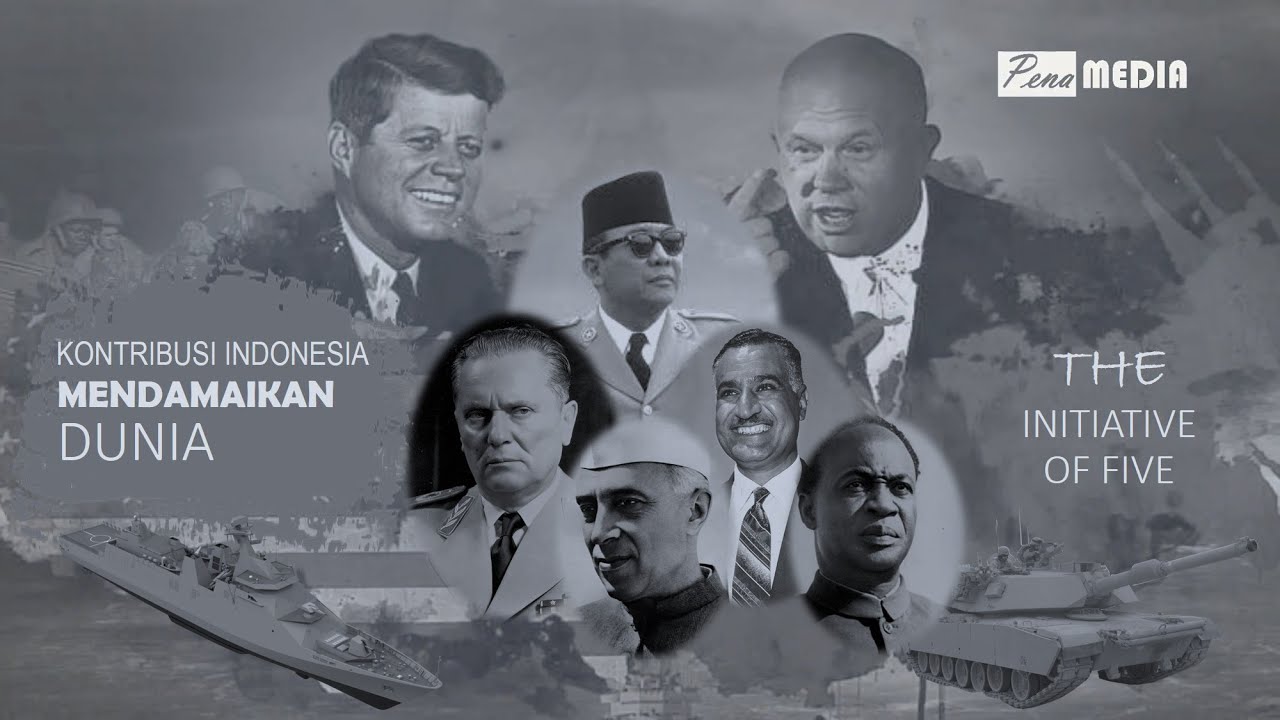GNB - Sejarah Singkat Gerakan Non Blok
Summary
TLDRThe video discusses the Non-Aligned Movement (NAM), established by countries in the 1950s to maintain neutrality amidst the Cold War's East-West divide. It highlights the origins of NAM, particularly through the efforts of leaders from Indonesia, India, Pakistan, Burma, and Sri Lanka, culminating in the first summit in Belgrade in 1961. The movement aimed to foster economic and political development among newly independent nations while advocating for peace and security. Notable figures such as Gamal Abdel Nasser and Jawaharlal Nehru played key roles in its foundation, emphasizing cooperation and collective solutions to international challenges.
Takeaways
- 🌍 The Non-Aligned Movement (NAM) emerged as a coalition of countries seeking to maintain independence from the influence of the Western and Eastern blocs during the Cold War.
- 📅 The movement was established following World War II, particularly gaining momentum in the 1950s as many nations in Asia, Africa, and Latin America gained independence.
- 🇮🇩 Indonesia played a crucial role in the founding of the NAM, alongside leaders from India, Pakistan, Burma, and Sri Lanka, holding initial meetings in Colombo and Bogor.
- 🕊️ The Bandung Conference in 1955 marked a significant step in solidifying cooperation among newly independent nations, addressing common challenges and formulating collective policies.
- ✊ Key figures in the founding of NAM included notable leaders such as Gamal Abdel Nasser, Kwame Nkrumah, Jawaharlal Nehru, Sukarno, and Josip Broz Tito.
- 📝 The First Summit Conference of the Non-Aligned Movement took place in Belgrade in 1961, with representatives from 25 countries aiming to establish a movement rather than a formal organization.
- 📈 The primary goals of NAM include promoting economic, social, and political progress among developing nations and easing tensions between the Western and Eastern blocs.
- 🌐 Over the years, NAM has focused on addressing various international issues, striving for peace and security in the face of global challenges.
- 🗣️ Indonesia hosted the 10th NAM Summit in Jakarta in 1992, emphasizing key issues like human rights, democracy, and North-South cooperation post-Cold War.
- 🤝 The movement represents over 100 countries and accounts for more than 55% of the world's population, reflecting its significant global influence.
Q & A
What is the Non-Aligned Movement (NAM)?
-The Non-Aligned Movement is an initiative founded by countries seeking to maintain independence and neutrality in foreign affairs, particularly during the Cold War, avoiding alliances with either the Western or Eastern blocs.
What percentage of the world's population does the Non-Aligned Movement represent?
-The Non-Aligned Movement represents approximately 55% of the world's population.
Why was the Non-Aligned Movement established?
-It was established in response to the polarization of the world into Western and Eastern blocs after World War II, to ensure that newly independent countries did not get caught up in the rivalry between these powers.
What historical context led to the emergence of the Non-Aligned Movement?
-The emergence of the Non-Aligned Movement was influenced by the Cold War tensions between the Western bloc, led by the United States, and the Eastern bloc, led by the Soviet Union, along with the decolonization process of many countries in Asia, Africa, and Latin America.
Who were the key leaders involved in founding the Non-Aligned Movement?
-Key leaders included President Sukarno of Indonesia, Prime Minister Jawaharlal Nehru of India, President Gamal Abdel Nasser of Egypt, President Kwame Nkrumah of Ghana, and President Josip Broz Tito of Yugoslavia.
What significant meetings contributed to the formation of the Non-Aligned Movement?
-The first significant meeting took place in Colombo, Sri Lanka, from April 28 to May 2, 1952, followed by another in Bogor, Indonesia, on December 29, 1954, culminating in the Asian-African Conference in Bandung in April 1955.
What were the main goals of the Asian-African Conference in Bandung?
-The main goals were to address the issues facing newly independent countries and to formulate a collective policy in international relations.
When and where was the first summit of the Non-Aligned Movement held?
-The first summit of the Non-Aligned Movement was held in Belgrade, Yugoslavia, from September 1 to 6, 1961.
What was one of the key agreements made during the first summit?
-During the first summit, it was agreed that the Non-Aligned Movement would not function as a bureaucratic organization but as a cooperative effort among member countries.
What themes were addressed during the 10th Non-Aligned Movement summit hosted by Indonesia?
-The 10th summit, held in Jakarta in 1992, addressed issues such as human rights, democracy, and North-South cooperation in the post-Cold War era.
Outlines

Этот раздел доступен только подписчикам платных тарифов. Пожалуйста, перейдите на платный тариф для доступа.
Перейти на платный тарифMindmap

Этот раздел доступен только подписчикам платных тарифов. Пожалуйста, перейдите на платный тариф для доступа.
Перейти на платный тарифKeywords

Этот раздел доступен только подписчикам платных тарифов. Пожалуйста, перейдите на платный тариф для доступа.
Перейти на платный тарифHighlights

Этот раздел доступен только подписчикам платных тарифов. Пожалуйста, перейдите на платный тариф для доступа.
Перейти на платный тарифTranscripts

Этот раздел доступен только подписчикам платных тарифов. Пожалуйста, перейдите на платный тариф для доступа.
Перейти на платный тарифПосмотреть больше похожих видео

Sejarah gerakan non blok

Podcast Perang Dingin

PPKn Kelas 11 BAB 4 Dinamika Peran Indonesia dalam Perdamaian Dunia #part2

CLASS XII - THE ACTIVE ROLE OF THE INDONESIAN NATION IN THE COLD WAR TIME

Video Pembelajaran #29 || Dinamika Peran Indonesia PPKn

The rise and fall of the Berlin Wall - Konrad H. Jarausch
5.0 / 5 (0 votes)
